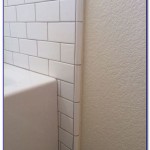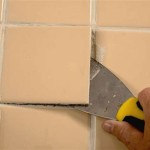Installing Ceiling Tiles: Achieving a Smoother Look Above and Beyond the Walls
Ceiling tiles offer a versatile and often cost-effective solution for improving the aesthetics, acoustics, and even insulation of a room. While the primary focus is on the ceiling itself, the visual impact extends to the entire space, subtly enhancing the perception of the walls and other features. This article provides a comprehensive guide to installing ceiling tiles, ensuring a professional-looking finish and a space that feels more refined and comfortable.
Before embarking on a ceiling tile installation project, careful planning is crucial. This involves accurately measuring the ceiling area, selecting the appropriate type of tiles, and gathering the necessary tools and materials. A well-prepared workspace and a clear understanding of the installation process will significantly contribute to a successful outcome.
Key Point 1: Preparation is Paramount: Measuring, Material Selection, and Workspace Setup
Accurate measurements are the foundation of a successful ceiling tile installation. Begin by determining the exact dimensions of the room. Measure the length and width of the ceiling at multiple points to account for any irregularities. Multiply these measurements to calculate the total square footage of the ceiling. Add approximately 10% to this figure to allow for cuts, waste, and potential errors. This extra material will save time and frustration later in the project.
Selecting the right type of ceiling tile is equally important. There are several options available, each with its own advantages and disadvantages. Common types include:
*Acoustic Tiles:
These tiles are designed to absorb sound and reduce echo, making them ideal for home theaters, offices, or any space where noise control is a priority. They are typically made from mineral fiber or fiberglass. *Suspended Ceiling Tiles (Drop Ceiling Tiles):
These tiles are installed in a suspended grid system and are a popular choice for basements and commercial spaces. They offer easy access to utilities hidden above the ceiling. *Direct-Apply Tiles:
These tiles are glued or stapled directly to the existing ceiling surface. They are a good option for rooms with low ceilings where minimizing ceiling height is a concern. *Decorative Tiles:
These tiles come in a variety of patterns, textures, and materials, allowing for a more personalized design. They can be made from metal, wood, or even embossed plastic.Consider the intended use of the room, the existing ceiling structure, and the desired aesthetic when making your selection. Also, pay attention to the tile's fire rating and moisture resistance, especially in kitchens or bathrooms.
Once the tile type is chosen, gather all the necessary tools and materials. Essential tools include:
*Measuring Tape:
For accurate measurements. *Utility Knife:
For cutting tiles. *Straight Edge:
For guiding cuts and ensuring straight lines. *Pencil:
For marking cut lines. *Level:
To ensure the tiles are installed evenly. *Safety Glasses:
To protect your eyes from debris. *Dust Mask:
To protect your lungs from dust and particles. *Ladder:
To safely reach the ceiling. *Adhesive (if using direct-apply tiles):
Choose an adhesive specifically designed for ceiling tiles. *Staple Gun (if using staples):
Ensure the staple gun is compatible with the tile material.Prepare the workspace by removing any furniture or obstacles from the room. Cover the floor with drop cloths to protect it from dust, debris, and adhesive. Ensure adequate lighting to provide clear visibility during the installation process. Proper preparation will save time, minimize mess, and improve the overall quality of the finished project.
Key Point 2: Installing Direct-Apply Ceiling Tiles: A Step-by-Step Guide
Direct-apply ceiling tiles are a popular choice for their ease of installation and ability to cover existing ceilings without significantly reducing headroom. This section outlines the steps involved in installing these tiles, focusing on achieving a smooth and professional finish.
Step 1: Preparing the Existing Ceiling:
Before applying any tiles, thoroughly clean the existing ceiling. Remove any dust, dirt, cobwebs, or loose paint. Repair any cracks or holes in the ceiling surface. If the ceiling is uneven, consider applying a layer of leveling compound to create a smooth base for the tiles. It's important to ensure the surface is clean, dry, and structurally sound to provide proper adhesion for the tiles. A fresh coat of primer can also improve adhesion and prevent the adhesive from being absorbed into the existing ceiling material.Step 2: Planning the Layout:
Carefully plan the layout of the tiles before applying any adhesive. Find the center of the ceiling by measuring halfway across the length and width of the room and marking the intersection point. Use a chalk line to create two perpendicular lines that intersect at the center point. These lines will serve as a guide for aligning the first row of tiles. This ensures that the tiles are centered and symmetrical. Consider the placement of light fixtures and other ceiling features when planning the layout.Step 3: Applying the Adhesive:
Apply adhesive to the back of the first tile according to the manufacturer's instructions. Use a trowel to spread the adhesive evenly over the entire surface. Apply a generous amount of adhesive to ensure a strong bond. Position the tile carefully along the chalk lines, pressing it firmly against the ceiling. Hold the tile in place for a few seconds to allow the adhesive to grab. Repeat this process for the remaining tiles in the first row.Step 4: Cutting and Installing Border Tiles:
Once the center tiles are in place, measure and cut the border tiles to fit along the edges of the ceiling. Use a utility knife and a straight edge to make clean, accurate cuts. Apply adhesive to the back of the border tiles and press them firmly against the ceiling. Ensure that the edges of the border tiles are flush with the walls. Precise cuts are crucial for a professional-looking finish.Step 5: Securing the Tiles (Optional):
For added security, especially on ceilings with uneven surfaces, consider using staples to secure the tiles in place. Use a staple gun to drive staples through the tiles and into the ceiling joists. Place the staples near the corners and edges of the tiles. Ensure that the staples are flush with the surface of the tiles to avoid any visible imperfections.Step 6: Finishing Touches:
After all the tiles are installed, inspect the ceiling for any gaps or imperfections. Fill any gaps with caulk or sealant. Wipe away any excess adhesive with a damp cloth. Allow the adhesive to dry completely before painting or otherwise finishing the ceiling. Proper finishing will enhance the appearance of the ceiling and ensure a long-lasting installation.Key Point 3: Working with Suspended Ceiling Tiles: Grid Installation and Tile Placement
Suspended ceiling tiles, also known as drop ceiling tiles, offer a modular and accessible ceiling solution. They involve a grid system suspended from the existing ceiling, into which the tiles are placed. This section details the process of installing a suspended ceiling, focusing on accurate grid installation and proper tile placement.
Step 1: Determining Ceiling Height and Perimeter Attachment:
Determine the desired height of the suspended ceiling. Use a laser level or chalk line to mark a level line around the perimeter of the room at the chosen height. Remember to factor in enough space for any lighting fixtures, ductwork, or other utilities that will be hidden above the ceiling. Attach the perimeter wall angles to the walls along the marked line. These angles will provide support for the grid system.Step 2: Installing the Suspension Wires:
Attach suspension wires to the existing ceiling joists or structure. These wires will support the main runners of the grid system. Space the wires according to the manufacturer's instructions, typically every 4 feet. Ensure the wires are securely fastened to both the ceiling structure and the main runners. The proper spacing and secure attachment of the suspension wires are critical for the stability of the entire suspended ceiling.Step 3: Installing Main Runners and Cross Tees:
Hang the main runners from the suspension wires. Use a level to ensure the runners are perfectly horizontal. Adjust the height of the wires as needed to achieve a level surface. Install the cross tees between the main runners, creating a grid pattern. The spacing of the cross tees will depend on the size of the ceiling tiles. Ensure that the cross tees are securely connected to the main runners. Correctly aligned and leveled main runners and cross tees are crucial for a professional-looking and functional suspended ceiling.Step 4: Laying in the Ceiling Tiles:
Carefully lift and place the ceiling tiles into the grid. Ensure that the tiles are properly aligned and seated within the grid system. Handle the tiles with care to avoid damaging them. Cut the border tiles to fit along the edges of the ceiling. Use a utility knife and a straight edge to make clean, accurate cuts. Placing tiles in the grid is relatively simple, but careful handling is important to avoid damage.Step 5: Installing Light Fixtures and Vents:
If installing recessed lighting or ventilation, cut holes in the ceiling tiles to accommodate the fixtures. Use a hole saw or utility knife to make the cuts. Connect the wiring or ductwork to the fixtures and place them in the designated openings. Ensure that the fixtures are properly supported and secured. The integration of lighting and ventilation requires careful planning and execution.Step 6: Final Adjustments and Inspection:
After all the tiles are installed, inspect the ceiling for any gaps or imperfections. Adjust the tiles as needed to ensure a uniform and level surface. Ensure that all the fixtures are properly installed and functioning correctly. A final inspection is essential for identifying and correcting any issues before the project is considered complete.Regardless of the chosen method, installing ceiling tiles can significantly improve the look and feel of a room. By following these guidelines and paying attention to detail, homeowners can achieve professional-looking results that enhance the beauty and functionality of their living spaces, complementing the appearance of their walls and overall interior design.

Ceiling Tile Installation Comparing Your Options Ceilings Armstrong Residential

How To Tile A Ceiling Tips And Guidelines Howstuffworks

Ceilings Armstrong Residential

How To Install Glue Up Lap Joint Ceiling Tiles Ceilume

12 Drop Ceiling Installation Tips From A Pro Family Handyman

A Drop Ceiling That Looks Better Than Drywall How To Install In Basement Diy

Installing Wall And Ceiling Panels In Your Kitchen Or Bathroom
How To Install Surface Mount Ceiling Tiles Easy Up Kanopi By Armstrong

Diy Beadboard Ceiling Tutorial Easy And Inexpensive Custom Treatment

Basement Ceiling Ideas Installation
Related Posts








